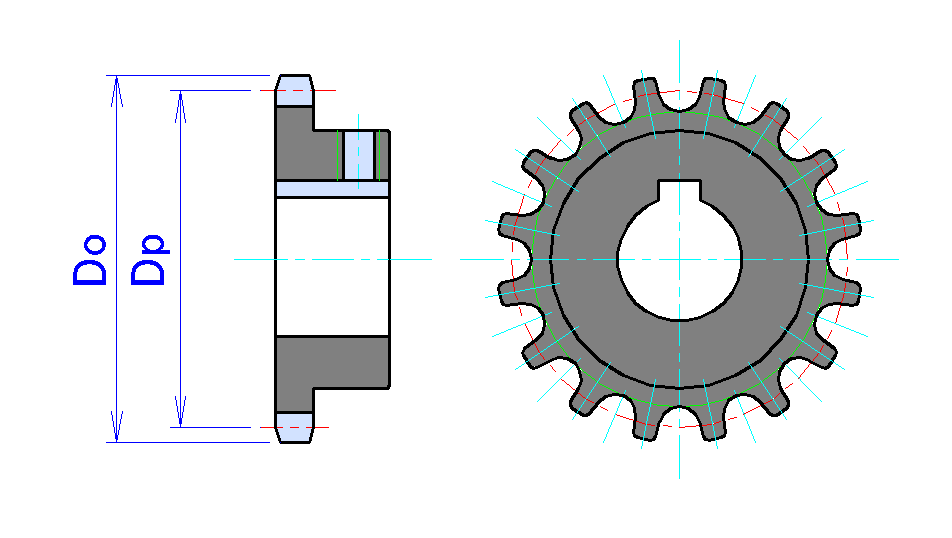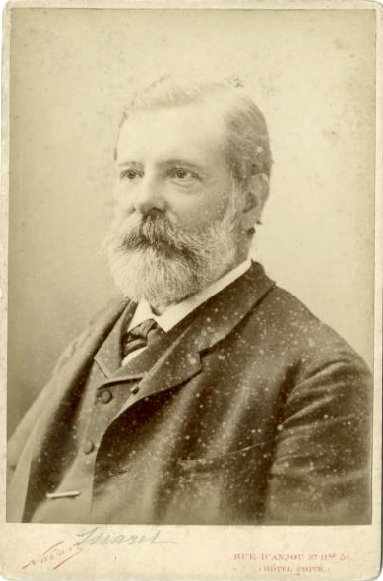|
Kinetoscope
The Kinetoscope is an early motion picture exhibition device, designed for films to be viewed by one person at a time through a peephole viewer window. The Kinetoscope was not a movie projector, but it introduced the basic approach that would become the standard for all cinematic projection before the advent of video: it created the illusion of movement by conveying a strip of perforated film bearing sequential images over a light source with a high-speed shutter. First described in conceptual terms by U.S. inventor Thomas Edison in 1888, it was largely developed by his employee William Kennedy Laurie Dickson between 1889 and 1892. Dickson and his team at the Edison lab in New Jersey also devised the Kinetograph, an innovative motion picture camera with rapid intermittent, or stop-and-go, film movement, to photograph movies for in-house experiments and, eventually, commercial Kinetoscope presentations. A Kinetoscope prototype was first semipublicly demonstrated to members ... [...More Info...] [...Related Items...] OR: [Wikipedia] [Google] [Baidu] |
Thomas Edison
Thomas Alva Edison (February 11, 1847October 18, 1931) was an American inventor and businessman. He developed many devices in fields such as electric power generation, mass communication, sound recording, and motion pictures. These inventions, which include the phonograph, the motion picture camera, and early versions of the electric light bulb, have had a widespread impact on the modern industrialized world. He was one of the first inventors to apply the principles of organized science and teamwork to the process of invention, working with many researchers and employees. He established the first industrial research laboratory. Edison was raised in the American Midwest. Early in his career he worked as a telegraph operator, which inspired some of his earliest inventions. In 1876, he established his first laboratory facility in Menlo Park, New Jersey, where many of his early inventions were developed. He later established a botanical laboratory in Fort Myers, Florida, ... [...More Info...] [...Related Items...] OR: [Wikipedia] [Google] [Baidu] |
Kinetoscope
The Kinetoscope is an early motion picture exhibition device, designed for films to be viewed by one person at a time through a peephole viewer window. The Kinetoscope was not a movie projector, but it introduced the basic approach that would become the standard for all cinematic projection before the advent of video: it created the illusion of movement by conveying a strip of perforated film bearing sequential images over a light source with a high-speed shutter. First described in conceptual terms by U.S. inventor Thomas Edison in 1888, it was largely developed by his employee William Kennedy Laurie Dickson between 1889 and 1892. Dickson and his team at the Edison lab in New Jersey also devised the Kinetograph, an innovative motion picture camera with rapid intermittent, or stop-and-go, film movement, to photograph movies for in-house experiments and, eventually, commercial Kinetoscope presentations. A Kinetoscope prototype was first semipublicly demonstrated to members ... [...More Info...] [...Related Items...] OR: [Wikipedia] [Google] [Baidu] |
Precursors Of Film
Precursors of film are concepts and devices that have much in common with the later art and techniques of cinema. Precursors of film are often referred to as precinema, or 'pre-cinema'. Terms like these are disliked by several historians, partly because they seem to devalue the individual qualities of these media by presenting them as a small step in the development of a later invention. For instance: the flip book, zoetrope and phenakistiscope are very tactile devices that allow study and play by manipulating the motion by hand, while the projected image in cinema is intangible. Such devices as the zoetrope were not replaced by cinema: they were still used after the breakthrough of film. Furthermore, many early media examples are also part of a tradition that not only shaped cinema, but also home video, video games, computer-generated imagery, virtual reality and much more. The study of early media devices is also part of a wider and less teleological approach called media archa ... [...More Info...] [...Related Items...] OR: [Wikipedia] [Google] [Baidu] |
Zoopraxiscope
The zoopraxiscope (initially named ''zoographiscope'' and ''zoogyroscope'') is an early device for displaying moving images and is considered an important predecessor of the movie projector. It was conceived by photographic pioneer Eadweard Muybridge in 1879 (and built for him by January 1880 to project his famous chronophotographic pictures in motion and thus prove that these were authentic). Muybridge used the projector in his public lectures from 1880 to 1895. The projector used 16" glass disks onto which Muybridge had an unidentified artist paint the sequences as silhouettes. This technique eliminated the backgrounds and enabled the creation of fanciful combinations and additional imaginary elements. Only one disk used photographic images, of a horse skeleton posed in different positions. A later series of 12″ discs, made in 1892–1894, used outlines drawn by Erwin F. Faber that were printed onto the discs photographically, then colored by hand. These colored discs wer ... [...More Info...] [...Related Items...] OR: [Wikipedia] [Google] [Baidu] |
Movie Projector
A movie projector is an opto-mechanical device for displaying motion picture film by projecting it onto a screen. Most of the optical and mechanical elements, except for the illumination and sound devices, are present in movie cameras. Modern movie projectors are specially built video projectors. (see also digital cinema) Many projectors are specific to a particular film gauge and not all movie projectors are film projectors since the use of film is required. Predecessors The main precursor to the movie projector was the magic lantern. In its most common setup it had a concave mirror behind a light source to help direct as much light as possible through a painted glass picture slide and a lens, out of the lantern onto a screen. Simple mechanics to have the painted images moving were probably implemented since Christiaan Huygens introduced the apparatus around 1659. Initially candles and oil lamps were used, but other light sources, such as the argand lamp and lime ... [...More Info...] [...Related Items...] OR: [Wikipedia] [Google] [Baidu] |
Video
Video is an electronic medium for the recording, copying, playback, broadcasting, and display of moving visual media. Video was first developed for mechanical television systems, which were quickly replaced by cathode-ray tube (CRT) systems which, in turn, were replaced by flat panel displays of several types. Video systems vary in display resolution, aspect ratio, refresh rate, color capabilities and other qualities. Analog and digital variants exist and can be carried on a variety of media, including radio broadcast, magnetic tape, optical discs, computer files, and network streaming. History Analog video Video technology was first developed for mechanical television systems, which were quickly replaced by cathode-ray tube (CRT) television systems, but several new technologies for video display devices have since been invented. Video was originally exclusively a live technology. Charles Ginsburg led an Ampex research team developing one of the first p ... [...More Info...] [...Related Items...] OR: [Wikipedia] [Google] [Baidu] |
Sprockets
A sprocket, sprocket-wheel or chainwheel is a profiled wheel with teeth that mesh with a chain, track or other perforated or indented material. The name 'sprocket' applies generally to any wheel upon which radial projections engage a chain passing over it. It is distinguished from a gear in that sprockets are never meshed together directly, and differs from a pulley in that sprockets have teeth and pulleys are smooth except for timing pulleys used with toothed belts. Sprockets are used in bicycles, motorcycles, tracked vehicles, and other machinery either to transmit rotary motion between two shafts where gears are unsuitable or to impart linear motion to a track, tape etc. Perhaps the most common form of sprocket may be found in the bicycle, in which the pedal shaft carries a large sprocket-wheel, which drives a chain, which, in turn, drives a small sprocket on the axle of the rear wheel. Early automobiles were also largely driven by sprocket and chain mechanism, a practice la ... [...More Info...] [...Related Items...] OR: [Wikipedia] [Google] [Baidu] |
Camera
A camera is an optical instrument that can capture an image. Most cameras can capture 2D images, with some more advanced models being able to capture 3D images. At a basic level, most cameras consist of sealed boxes (the camera body), with a small hole (the aperture) that allows light to pass through in order to capture an image on a light-sensitive surface (usually a digital sensor or photographic film). Cameras have various mechanisms to control how the light falls onto the light-sensitive surface. Lenses focus the light entering the camera, and the aperture can be narrowed or widened. A shutter mechanism determines the amount of time the photosensitive surface is exposed to the light. The still image camera is the main instrument in the art of photography. Captured images may be reproduced later as part of the process of photography, digital imaging, or photographic printing. Similar artistic fields in the moving-image camera domain are film, videography, and ci ... [...More Info...] [...Related Items...] OR: [Wikipedia] [Google] [Baidu] |
Chronophotography
Chronophotography is a photographic technique from the Victorian era which captures a number of phases of movements. The best known chronophotography works were mostly intended for the scientific study of locomotion, to discover practical information for animal handlers and/or as reference material for artists. Although many results were not intended to be exhibited as moving pictures, there is much overlap with the more or less simultaneous quest to register and exhibit photographic motion pictures. Definition Chronophotography is defined as "a set of photographs of a moving object, taken for the purpose of recording and exhibiting successive phases of motion". The term ''chronophotography'' was coined by French physiologist Étienne-Jules Marey to describe photographs of movement from which measurements could be taken and motion could be studied. It is derived from the Greek word χρόνος '' chrónos'' ("time") combined with ''photography''.The J. Paul Getty Museum (199 ... [...More Info...] [...Related Items...] OR: [Wikipedia] [Google] [Baidu] |
Étienne-Jules Marey
Étienne-Jules Marey (; 5 March 1830, Beaune, Côte-d'Or – 15 May 1904, Paris) was a French scientist, physiologist and chronophotographer. His work was significant in the development of cardiology, physical instrumentation, aviation, cinematography and the science of laboratory photography. He is widely considered to be a pioneer of photography and an influential pioneer of the history of cinema. He was also a pioneer in establishing a variety of graphical techniques for the display and interpretation of quantitative data from physiological measurement. Biography Marey started by studying blood circulation in the human body. Then he shifted to analyzing heart beats, respiration, muscles (myography), and movement of the body. To aid his studies he developed many instruments for precise measurements. For example, in 1859, in collaboration with the physiologist Auguste Chauveau and the watch manufacturer Breguet, he developed a wearable ''Sphygmograph'' to measure the pu ... [...More Info...] [...Related Items...] OR: [Wikipedia] [Google] [Baidu] |
Exposition Universelle (1889)
The Exposition Universelle of 1889 () was a world's fair held in Paris, France, from 5 May to 31 October 1889. It was the fourth of eight expositions held in the city between 1855 and 1937. It attracted more than thirty-two million visitors. The most famous structure created for the Exposition, and still remaining, is the Eiffel Tower. Organization The Exposition was held to celebrate the 100th anniversary of the Storming of the Bastille, which marked the beginning of French Revolution, and was also seen as a way to stimulate the economy and pull France out of an economic recession. The Exposition attracted 61,722 official exhibitors, of whom twenty-five thousand were from outside of France. Admission price Admission to the Exposition cost forty centimes, at a time when the price of an "economy" plate of meat and vegetables in a Paris cafe was ten centimes. Visitors paid an additional price for several of the Exposition's most popular attractions. Climbing the Eiffel Tow ... [...More Info...] [...Related Items...] OR: [Wikipedia] [Google] [Baidu] |








.jpg)

